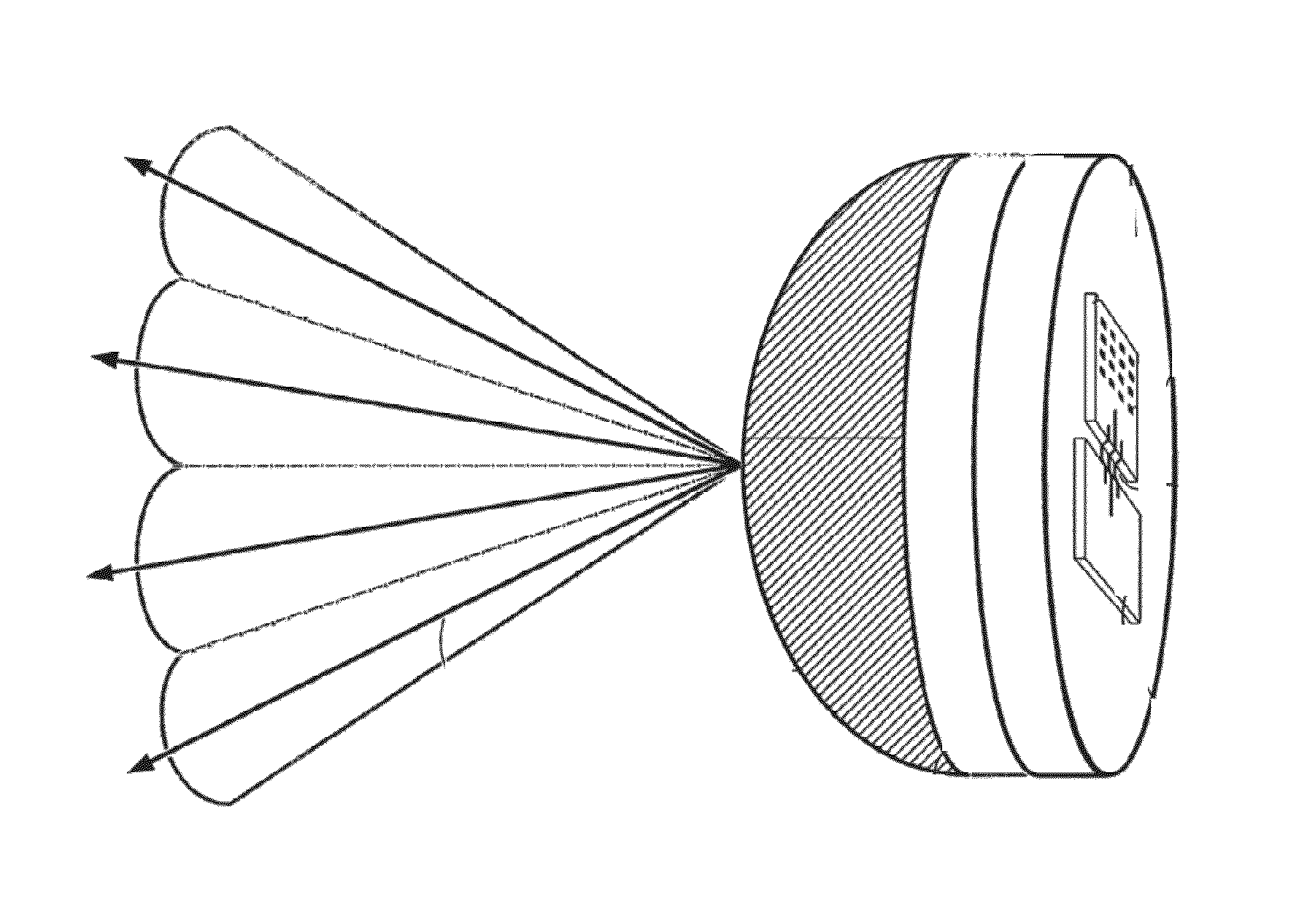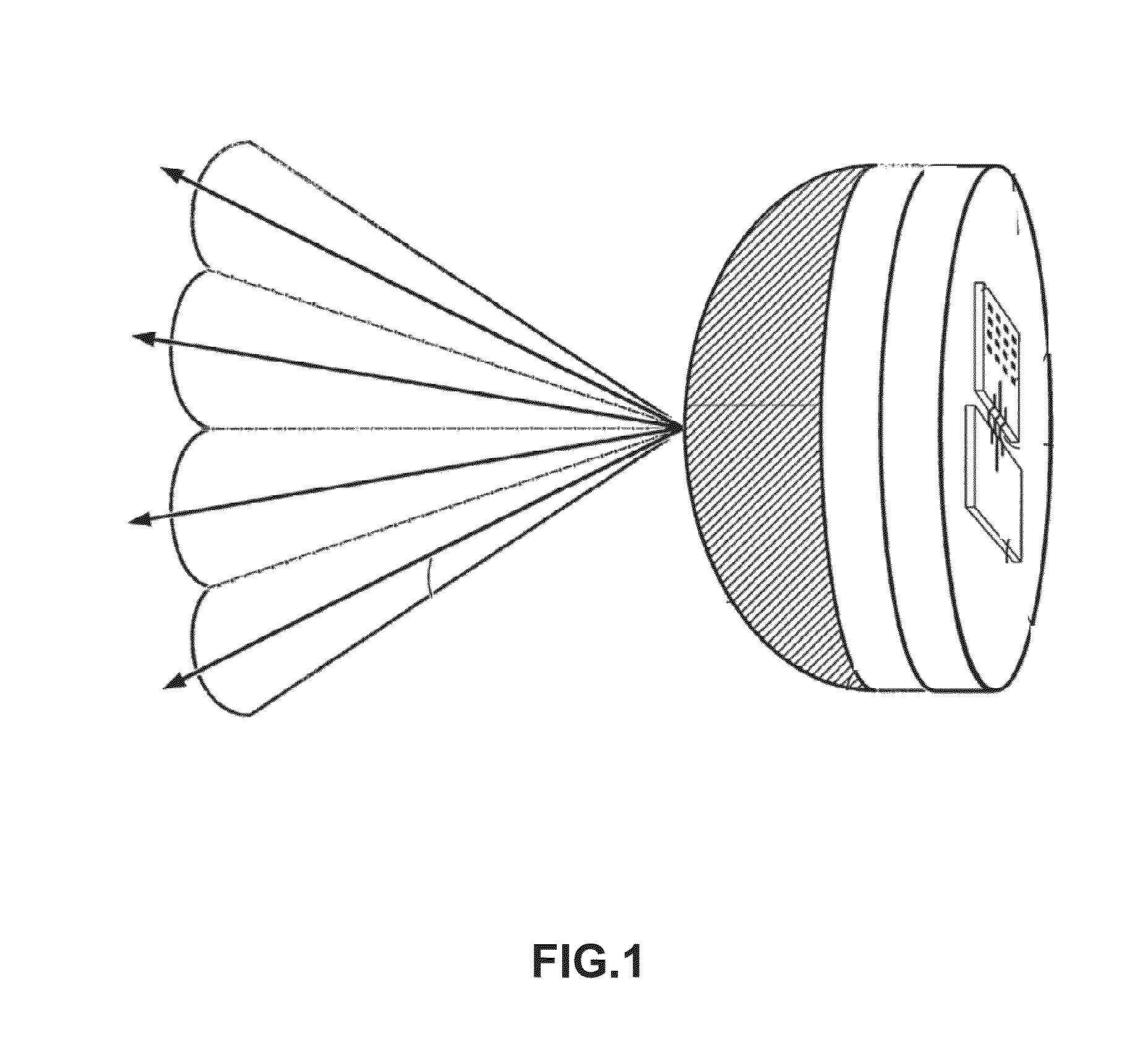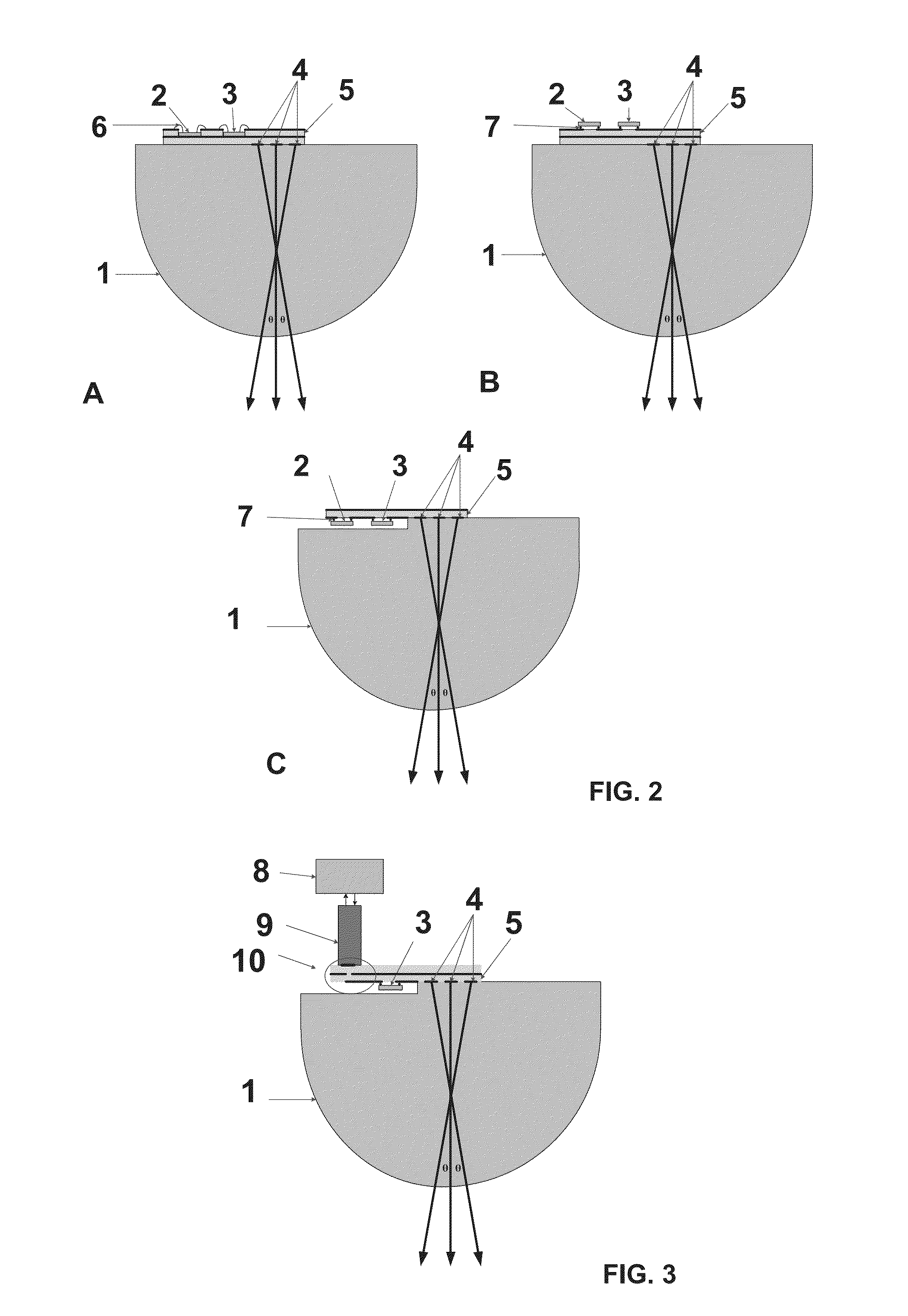Electronically Beam-Steerable Antenna Device
a beam-steering antenna and beam-steering technology, applied in the field of radio communication technology, can solve the problems of significantly reducing losses, not being able to combine in a compact structure an antenna element, and the dielectric board not being able to realize the active circui
- Summary
- Abstract
- Description
- Claims
- Application Information
AI Technical Summary
Benefits of technology
Problems solved by technology
Method used
Image
Examples
Embodiment Construction
[0050]The present invention will be more fully understood from the description of the embodiments of realization of an electronically beam steerable integrated lens antenna for high data rate point-to-point millimeter-wave communications in radio relay station applications.
[0051]FIG. 2 shows axial sections of various embodiments of an integrated lens antenna according to the present invention.
[0052]In one embodiment, the integrated lens antenna comprises a homogeneous dielectric lens 1, primary antenna elements 4 and transmission lines for connecting thereof (not shown), a switching network 3 adapted to apply electric power to at least one primary antenna element, and a transceiver 2. The switching network 3 and the transceiver 2 are implemented as semiconductor integrated circuits. Primary antenna elements 4 are formed on high frequency dielectric board 5 and integrated in or on a flat surface of homogeneous dielectric lens 1. A multilayer printed or ceramic board can be used as a ...
PUM
 Login to View More
Login to View More Abstract
Description
Claims
Application Information
 Login to View More
Login to View More - R&D
- Intellectual Property
- Life Sciences
- Materials
- Tech Scout
- Unparalleled Data Quality
- Higher Quality Content
- 60% Fewer Hallucinations
Browse by: Latest US Patents, China's latest patents, Technical Efficacy Thesaurus, Application Domain, Technology Topic, Popular Technical Reports.
© 2025 PatSnap. All rights reserved.Legal|Privacy policy|Modern Slavery Act Transparency Statement|Sitemap|About US| Contact US: help@patsnap.com



